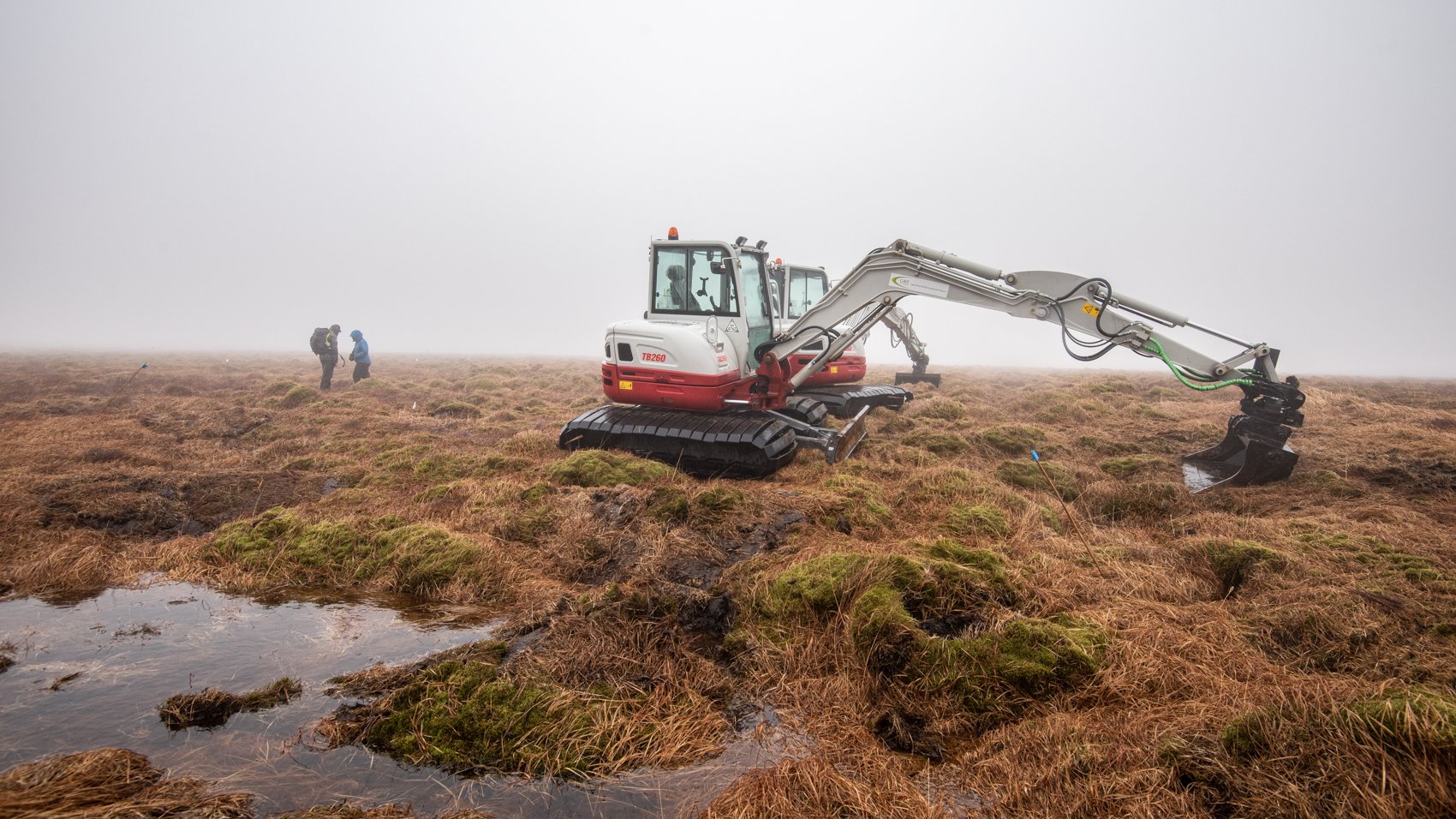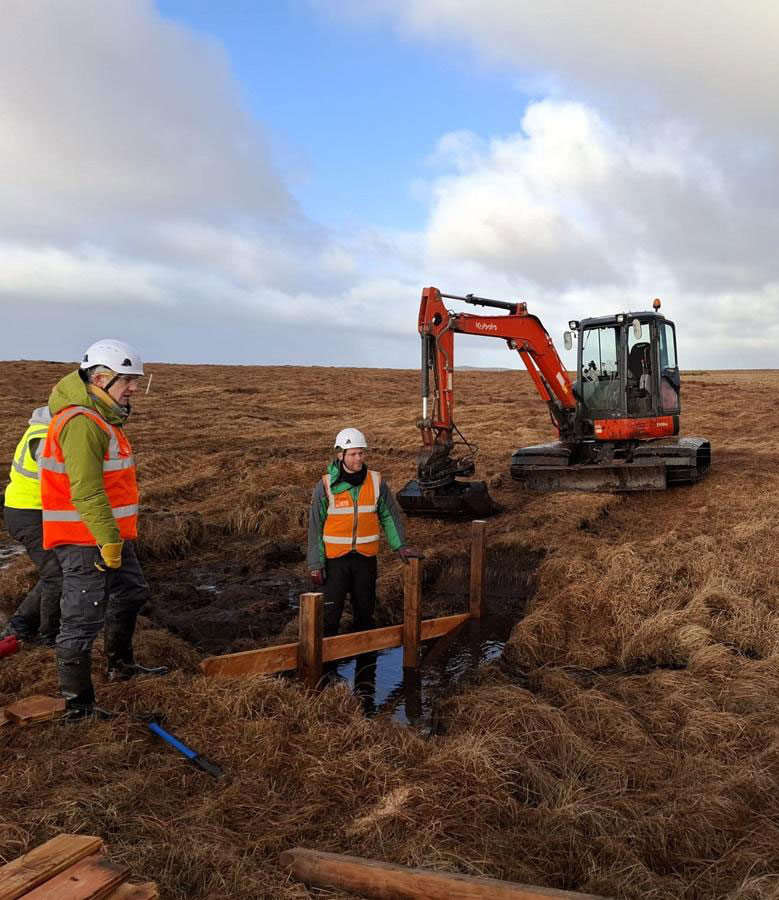These measures help retain water, prevent carbon loss, and create a healthier, more resilient moorland.
Despite the recent spell of bad weather, peat bog regeneration on Dartmoor continues to make great strides, with restoration efforts proving resilient against the elements. Over the past year, I have been involved in several regeneration sites, contributing to the vital work of re-wetting and restoring degraded peatland across the moor.
The South West Peatland Project, funded by DEFRA and led by the South West Peatland Partnership, is playing a crucial role in reversing the damage to these fragile ecosystems. This ambitious programme aims to restore 1,599 hectares of peatland across the South West, with 300 hectares of that work focused on Dartmoor. Restoration efforts include blocking erosion gullies, drainage channels, and historic peat cuttings to encourage the return of peat-forming plants like sphagnum moss. These measures help retain water, prevent carbon loss, and create a healthier, more resilient moorland.
The benefits of peatland restoration extend far beyond Dartmoor itself. By slowing water runoff, these projects help mitigate flooding downstream, while the re-wetted peat serves as a powerful carbon sink, capturing and storing atmospheric carbon to combat climate change. Additionally, these unique habitats support a range of rare and endangered species, enhancing biodiversity across the moor.
Scientific research is also playing a key role in the project’s success. Through the Mires for the Moor initiative, the University of Exeter is closely monitoring the impact of upland restoration on habitat health, water quality, and natural flood management. Their research has been instrumental in mapping areas of peatland degradation, ensuring that efforts are targeted where they are most needed.
Since securing funding in 2021, Dartmoor National Park has continued to expand its restoration work and is actively seeking further investment to sustain and scale up these efforts in the coming years. With ongoing commitment and collaboration between conservation groups, researchers, and local experts, Dartmoor’s peat bogs are on the path to recovery—ensuring a healthier, more resilient landscape for future generations.
For those interested in supporting or learning more about peatland restoration, keep an eye on upcoming community initiatives and research findings that will continue to shape the future of Dartmoor’s moors.



